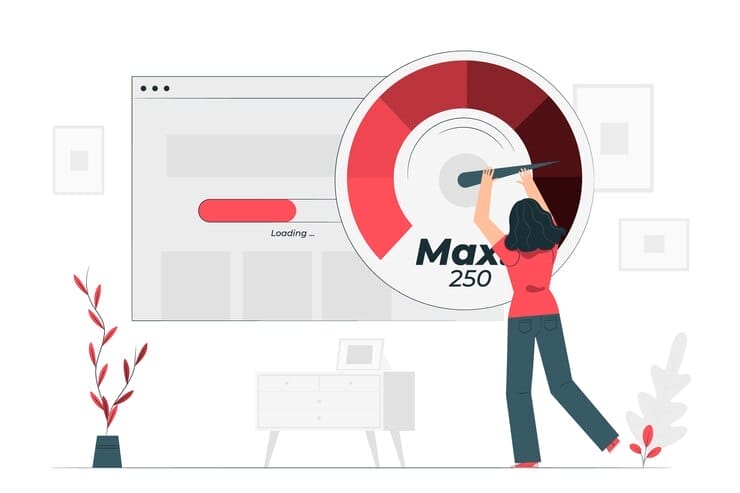Nothing compares to the power of a strong brand.
A strong brand can give your product credibility and make consumers feel confident about their purchase. This isn’t just hype; trust me, it works.
Through the years, we’ve seen how a good product and strong branding leads to repeat sales and a deeper loyalty from customers who know they are getting quality and support from their preferred vendor.
It’s worth considering how you can strengthen your brand if you’re looking to start a new business or expand an existing one.
The best way to do this is through branding—the creation of an image that represents who you are and what you stand for. This includes everything from logo design to packaging design to website development and more!
If you want to build a product that users will love, work on building a strong brand with your product.
First off, let’s define branding, brand identity, and image in simple terms:
Branding

Branding is the process of developing a unique name for a product, service, or organization. This includes choosing a symbol, font style, colors, and imagery.
Branding helps consumers identify products and services they want to purchase. It also helps companies differentiate their products from competitors’ offerings.
Branding is not just about creating a good-looking logo. It involves researching consumer behavior, analyzing market trends, and determining the target audience. You need to know how to choose a great name, find a trademarked name, and ensure your branding message resonates with your audience.
Brand Identity

Brand Identity is often described as “the essence of your company’s personality”. Brand Identity is what helps people identify your product – whether that’s through the way it looks, how it sounds, or even how it feels.
The brand identity can include everything from the logo design to the color palette used throughout the website. When creating your brand identity, consider these points:
– What does this look like?
– How do I want my audience to feel about me?
– Who am I?
– How do they feel about me?
You should always strive to make sure that the brand identity is something that reflects who you are as a business. If your brand identity doesn’t represent you and your business, then it might not be effective enough to help build trust among customers.
Definition of a Brand Image

There’s a saying that goes, “A good brand image is more important than a good product”. That’s no exaggeration. A positive brand image gives consumers confidence about their purchase, which makes them feel more confident about buying your product over other alternatives.
The brand image is the first impression that your customers have about your company. This has the potential to make or ruin your company.
A brand’s logo is the face that represents your business. It tells people who you are and what you stand for. Logos can be created using any number of design elements including color, shape, typography, and other visual elements.
Brands are designed to represent a company’s values and personality. The best brands have been able to create an emotional connection between their customers and themselves, turning them into loyal fans.
If you are not sure what those are, ask yourself these questions: What does my company stand for? Who are we trying to reach? How do we want our customers to feel after they leave our store?
Your logo should reflect your company’s core values. These values can be anything from environmental awareness to customer service, to quality products.
You may even have some that are personal to you. Whatever they are, keep them close to your heart. They should guide your decisions and help you stay true to who you are.
If you don’t know where to start, here are a few things to think about:
– Think about your company’s mission statement. Do you need to change this?
– Is your company’s name too long or short?
– Are you using an outdated logo?
How do you create a good brand logo?
1. Create a logo that represents your company’s identity

A logo should be simple yet effective. A good logo should have a strong visual impact and stand out from other logos. People can recognize a logo immediately and associate it with a certain product or service.
2. Choose a color palette that reflects your brand

The colors you choose should reflect your brand’s personality. If you are trying to convey a positive message, then use bright, happy colors like reds, yellows, greens, and blues. On the contrary, if you want to convey a negative message, then go for darker, moodier colors like browns, grays, and blacks.
3. Make sure your logo has character

Your logo should be unique and memorable. This means that it should have some sort of quality that makes people want to remember it. You could try adding special symbols, patterns, textures, or even shapes to make your logo interesting.
difference between brand image and brand identity
Brand identity refers to the collection of elements that a company creates to portray an image to its consumer. Brand image, on the other hand, refers to the opinion consumers form about a brand. The two terms are often used interchangeably by marketers, but there’s one key distinction between them: brand identity is often developed internally by a company’s marketing staff, whereas the brand image is based on feedback from consumers. So, let’s go over the specifics behind each term and why you’ll most likely hear it mentioned.
Ten pointers to help you build a strong brand image and identity

There are many ways to develop a brand. Some people think a brand should be simple, while others believe it needs to be complex. There are no right answers here – just know what works best for your business!
To get you started, here are 10 ideas:
1. Know your audience.

You should first understand who your target market is. What are their needs? What are they looking for? Who are your main competitors? How do you distinguish yourself from the crowd? To find these answers, you need to research your customers and get inside their heads. You want to figure out what makes them tick, what motivates them, and how they think about your product.
2. Start small.
It’s tempting to jump right into designing a logo or creating a website. But if you’re just starting, don’t go big. Think about where you want to take your business and start there.
If you want to sell t-shirts online, then focus on selling t-shirts first. Don’t try to design a whole website at once; instead, build your way up.
3. Your Brand Name Should Be Short And Easy To Remember
Your brand name should be short and easy to remember. You can use your company name if you have one, but make sure not to use any other word that could be confused with a trademarked term.
Examples include “Greenhouse Growers” instead of “The Green House Growers” or “Growers Supply Company” instead of ‘’Growers Supply Co.” If you are using your company name, you may want to change the spelling just slightly (e.g., from “greenhousegrowers.com” to “greenhousesgrowers.com“).
4. Build a Brand that Resonates With Your Target Audience
Your target audience should feel like their needs are being met by your product, even if they are not specifically mentioned. You can do this through the use of emotion and storytelling.
When designing your brand, think about how people respond to specific brands; whether they laugh at them, cry at them, or get excited over them. This will help you build a brand that resonates with your target audience in the ways that matter most to them: emotionally.
5. Be consistent
If you want to keep your customers, you have to give them something that feels familiar. Don’t change too much too often. Change is fine, but make sure that it fits into your overall branding strategy. Also, don’t forget about your company name! Make sure it’s easy to remember and fits into your brand.

6. Make Sure That Your Logo Is Consistent With Your Brand Name
Make sure that your logo is consistent with your brand name. In addition, your logo should reflect your business purpose.
A logo that includes your company name is preferable over a logo that is merely a graphic representation of your company name. This is especially true when your company has multiple locations.
Use a catchy slogan or tagline and incorporate it into marketing materials and websites. This helps tell prospective customers who your company is and how they can benefit from purchasing your products.
7. Use Your Branding Throughout Your Website
Use branding throughout your website. Select a recognizable logo that matches well with your overall branding. Include your company name and address in the footer of each page, and place your contact information at the top of each page. When possible, try to incorporate your brand into your web copy. For example, add your company name to the beginning of each sentence or paragraph.
8. Show Who You Are Through Marketing
Use marketing strategies to show the world who you are, and how you solve customer problems. Tell customers stories through advertising, videos, social media content, and other forms of marketing.
9. Test Different Messages
Create different messages for different audiences and test them out. See which ones work best, and use that information to inform future campaigns.
10. Create Content That Stands Out From the Rest
If you find yourself sharing a lot of the same types of content, consider creating something special. Make sure that all of your content stands out against everything else out there.

Conclusion
So it all comes down to identity. Even if you’re starting a brand new business, the most important thing is to have an idea of who you are and what your brand stands for.
If your business has a clear sense of whom they are and what they represent, then it’s going to come through in its brand and likely lead to an increased customer base.
Just don’t be afraid to experiment—what works for others may not necessarily work for you, after all. The key is to try new things and see what sticks.
Of course, remember there are plenty of small, achievable steps you and your team can take to make an impact on the way people perceive your brand and since we all need to set ourselves apart, why not start today?
RELATED: Best Guide to Brand Positioning in 2022
You love this Article, right? Get more Updates via Adilo’s Twitter Page.







